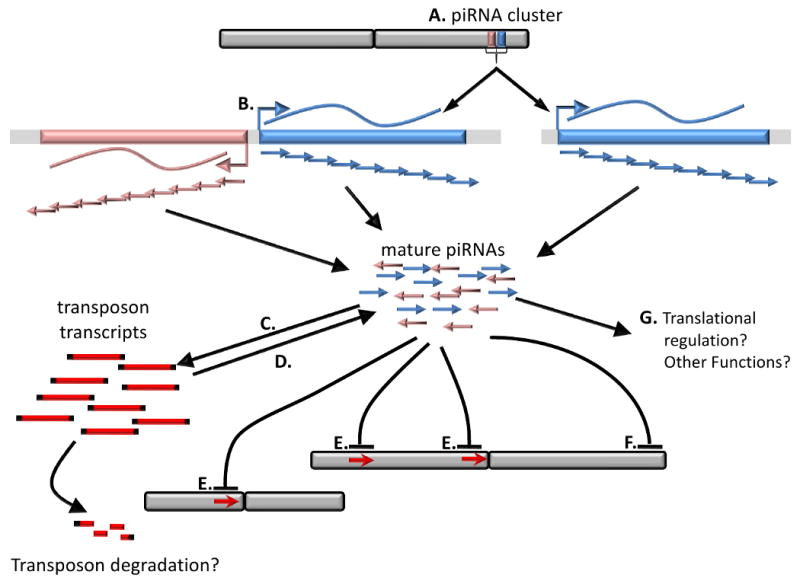Figure 3.

The Biogenesis and function of piRNAs. piRNAs are processed from long precursors encoded by long primary transcripts. A. Often piRNAs cluster to arrays that appear to bi-directionally transcribed, while less often are primary transcripts derived from one strand. B. The clusters are transcribed as long transcripts that go through primary processing to give rise to mature piRNAs, the mechanism of primary processing is not understood. C. piRNAs are believed to be vectors for transposon mRNA regulation, which leads potentially to degradation. D. At the same time, post-transcriptional amplification leads to more mature piRNAs (see figure 4 and text). E. several lines of evidence show that PIWI proteins, presumably through piRNAs lead to epigenetic repression of transposon encoding regions (red arrow). F. Other epigenetic functions of PIWI-proteins may exist, at least in Drosophila more than one line of evidence indicate that PIWI-proteins have a role in telomere length maintenance and epigenetic control. The epigenetic control appears to involve piRNAs as sequence recognition molecules. G. Evidence for a role of piRNAs in translational control and other functions exists but remain to be stringently tested.
